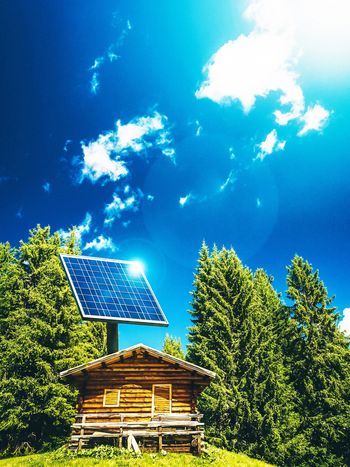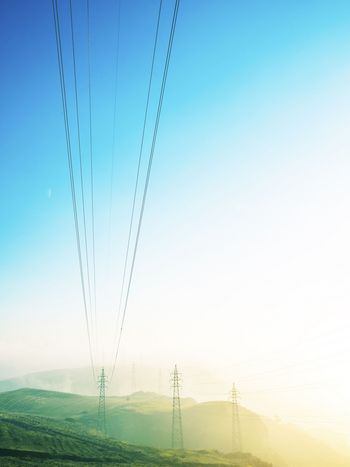Power System Technical Performance
By Zia Emin, Outgoing Chair, Marta Val Escudero, Incoming Chair and Genevieve Lietz, Secretary
Overview
Study Committee (SC) C4’s main mission is to facilitate and promote the progress of power systems engineering and the international exchange of information and knowledge in the field of system technical performance and to add value to this information and knowledge by means of gathering state-of-the-art practices from around the world and developing recommendations. The main approach is through the formation of working groups (WGs) and the publication of CIGRE technical brochures; some recent examples are provided at the end of this brief report. The other approach is through sponsoring and promoting colloquia around the world which focus on the key technical challenges in modern power systems that relate to system technical performance.
The scope of SC C4 is the development and review of methods and tools for analysis related to power systems, with particular reference to dynamic and transient conditions and to the interaction between the power system and each of the following: (i) its apparatus/sub-systems; (ii) external causes of stress; and (iii) other installations. Specific issues related to the design and manufacturing of components and apparatus are not within the scope of SC C4, nor are those specifically related to planning, operation and control, apart from cases in which a component, apparatus, or subsystem behaviour depends on, or significantly interacts with, the performance of the nearby power system.
The SC C4 scope covers system technical performance phenomena that range from nanoseconds to hours, which includes everything from lightning, switching, power quality, electromagnetic compatibility and electromagnetic interference (EMC/EMI) and insulation coordination to power system stability, modelling and long-term system dynamics.
As the scope is quite broad and covers all aspects of the technical performance of large power systems, further work was carried out to better explain the timeframe of various phenomena. This work is nearing its completion and the timeframes of various phenomena are given in Figure 1. The output of this work will be included as an appendix in the SC C4 strategic plan.
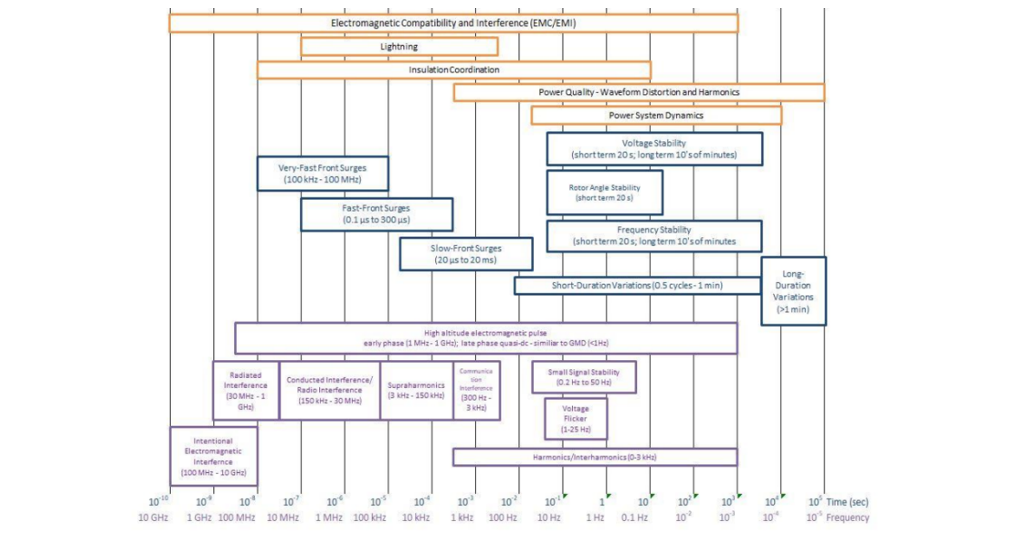
Figure 1 - Range of phenomena investigated by SC C4
Due to its wide remit, SC C4 alone cannot investigate power system technical performance issues without a solid understanding of the equipment itself, its performance, system planning and operational issues and environmental factors that may play a role in system performance. This leads to close cooperation between SC C4 and other CIGRE SCs that deal with equipment, system planning and operations, distribution networks, materials and testing, and environmental aspects of the power system. The close cooperation can be seen from the establishment of several joint working groups (JWGs). Furthermore, nomination and establishment of liaison members from other SCs in SC C4’s WGs and vice versa also adds to the close collaboration between SC C4 and other SCs. At the time of writing, there are 14 JWGs with SCs A1, A2, A3, B1, B2, B4, B5, C1 and C2. Furthermore, two SC C4 WGs are joint with CIRED on issues related to distribution networks. There are also two JWGs between SC C2 and IEEE owing to the increasing cooperation between the two organisations. SC C4 also has formal liaisons with the IEC TC 77 (on EMC) and the International Special Committee on Radio Interference (CISPR).
Structure and Strategic Direction
SC C4 is composed of 24 regular members, 2 additional regular member and 18 observer members, together with a chairperson and a secretary representing 43 countries. SC C4 presently consists of some 42 WGs performing highly technical work aligned with the strategic fields of SC C4. These WGs are composed of over six hundred individual technical experts from 60+ countries around the world, some serving in more than one WG.
There are also three advisory groups (AGs) within SC C4. AG C4.1 is a group of experts that consults on the strategic directions for SC C4 and it includes liaisons with IEC and IEEE. AG C4.2 on Customers reviews and prioritises the composition of target groups and identifies improvements and opportunities for communication of the SC target groups. AG C4.3 on Tutorials and Conferences coordinates SC C4’s activities with respect to colloquia and tutorials.
The SC C4 annual meeting in 2022 took place during the CIGRE Session in Paris and some of the participants (SC Regular Members, AG members and WG conveners) are shown below.
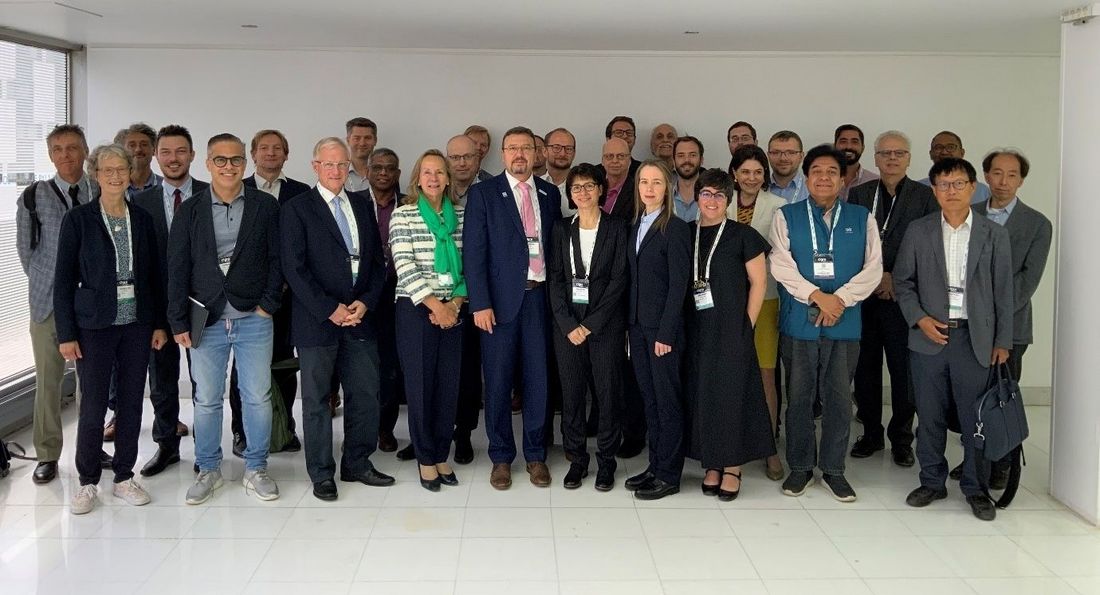
Participants of the 2022 Paris meeting of SC C4
Main Technical Areas of Activity
Below is a brief summary of WG activities in the main technical directions within SC C4. A complete list of all active SC C4 WGs with their annual reports is available on the SC C4 KMS space.
Power Quality
Currently there are six WGs concentrating on power quality related issues of present and future power systems. Work in most of the WGs is at an advanced stage. The WG C4.42 is looking at the important issue of low-order harmonic emissions from loads considering the changing load characteristics due to an increasing penetration of power electronic based loads and it is approaching completion. The work of WG C4.40 is closely related and equally important in this area as it is trying to revise the relevant IEC Technical Reports, i.e. IEC 61000-3-6, 61000-3-7, 61000-3-13 and 61000-3-14. WG C4.49 is looking at multi-frequency instabilities of grid-tied converter based modern power systems crossing both stability and power quality analysis areas; and C4.51 is addressing traction supply points and the impact these points may have on the wider system with respect to power quality. WG C4.63 looking at harmonic power quality standards and approaches from a comparative viewpoint, and WG C4.65 which is addressing the specification, validation and application of harmonic models for inverter-based resources.
Electromagnetic Compatibility and Electromagnetic Interference (EMC/EMI)
Electromagnetic Compatibility and Electromagnetic Interference (EMC/EMI) issues addressed by SC C4 cover emission and immunity problems resulting from disturbances that are not addressed under the subject of power quality. These include disturbances produced by the electrical power system as well as disturbances of external origin able to interfere with the electrical power system. Such disturbances can affect the integrated system performance by electrical conduction (electrical contact), induction (electric or magnetic fields) or radiation (high-frequency electromagnetic field). Health effects related to low-frequency electromagnetic field (EMF) are excluded, whilst intentional electromagnetic interference (IEMI) is instead included.
There are five active WGs within SC C4 that can be classified as being related to EMC. WG C4.44 is focusing on EMC for large photovoltaic systems and its work is at an advanced stage. Two further WGs include C4.54, which is looking at the protection of HV power network control electronics from the high-altitude electromagnetic pulse (HEMP), and C4.55, which is examining EMC related very-fast transients in gas-insulated substations. WG C4.68 is working on identifying EMC issues in modern and future power systems building on the work that was achieved a few years ago by the now disbanded WG C4.24. Newly formed JWG C4/B4.72 is looking into lightning and switching induced electromagnetic compatibility (EMC) issues in DC power systems and new emerging power electronics-based DC equipment.
Insulation Coordination
There are five active WGs within the technical direction of insulation coordination. Two WGs concentrate on overvoltage related issues: JWG B4/B1/C4.73 on the surge and extended overvoltage testing of HVDC cable systems with a goal to produce recommendations on methods for determining lightning levels in mixed OHL-cable systems; and WG C4.46 on the evaluation of temporary overvoltages. These are complemented by JWG B1/C4.69, which is specifically addressing the development of insulation coordination recommendations on AC cable systems. Two well-advanced WGs include C4.50, which is investigating the evaluation of transient performance of grounding systems in substations, and JWG C4/A3.53, which is looking at the application of advanced metal-oxide varistors for surge arresters with better protection properties. There are a few WGs that are under consideration in a similar technical direction.
Lightning
Lightning is one of the most important natural phenomena that impacts and interacts with the electric power network necessitating advanced knowledge of lighting current parameters. There are presently nine WGs investigating various aspects of lightning. WG C4.36 is looking at lightning parameters and engineering consequences for wind turbines WG C4.43 is well advanced in its work reviewing lightning protection design schemes for structures from the viewpoint of avoiding physical damage and overvoltages that could generate flashover at electric apparatus and lines and investigating the applicability of these schemes to nuclear power plants. Two other WGs include WG C4.57, which is looking specifically at formulating guidelines for the estimation of lightning performance of distribution lines; and JWG B2/C4.76, which is concentrating on lightning and grounding considerations during rebuilding or refurbishment of overhead lines for both AC and DC. WG C4.59 is addressing real-time lightning protection in relation to the networks of the future where digitisation is heavily in use. Three further WGs include WG C4.61 investigating lightning transient sensing and monitoring, WG C4.66 researching new concepts for analysis of multiphase back-flashover phenomena, and WG C4.67 investigating the lightning protection of hybrid overhead lines. Two new WGs, WG C4.69 and WG C4.70, are looking at quantifying the lightning response of tower-footing electrodes of overhead transmission lines in terms of measurement methods, and the application of space-based lightning detection in power systems, respectively. Newly formed JWG C4/B4.72 is examining lightning and switching induced electromagnetic compatibility (EMC) issues in DC power systems and new emerging power electronics-based DC equipment.
Power Systems Dynamic Performance Models and Numerical Analysis
The subject of system dynamics and the overall system performance in terms of various stability parameters is gaining significant attention in the face of increased connection of power electronic based devices. This trend is obvious from the number of WGs within this technical direction with a total of sixteen WGs looking at many important issues of present and future concerns for power system dynamics and analysis. These include subjects such as:
- Impact of Low Inertia Network on Protection and Control (JWG B5/C4.61)
- Guidelines for Sub-synchronous Oscillation Studies in Power Electronics Dominated Power Systems (JWG C4/B4.52)
- Electromagnetic Transient Simulation Models for Large-Scale System Impact Studies in Power Systems having a High Penetration of Inverter Connected Generation (WG C4.56)
- Evaluation of Voltage Stability Assessment Methodologies in Transmission Systems (JWG C4/C2.58/IEEE)
- Generic EMT-Type Modelling of Inverter-Based Resources for Long Term Planning Studies (WG C4.60)
- Review of Phasor Measurement Unit Applications (JWG C4/C2.62/IEEE)
- Application of Real-Time Digital Simulation in Power Systems (WG C4.64)
- Small signal stability analysis in inverter-based resource dominated power system (WG C4.71)
These WGs, and several others that are at a more advanced stage, are investigating challenging technical issues associated with modelling, simulation and dynamic performance assessment of power systems around the world. The ever-increasing penetration of renewable energy sources as part of the generation mix is driving the formation of more WGs in this area due to the need to understand the level of technical performance issues facing the grid of the future.
Newly Formed Working Groups
Six new WGs have been established since October 2021:
- WG C4.69: Quantifying the Lightning Response of Tower-Footing Electrodes of Overhead Transmission Lines: Methods of Measurement
- WG C4.70: Application of Space-Based Lightning Detection in Power Systems
- WG C4.71: Small Signal Stability Analysis in Inverter Based Resource Dominated Power Systems
- JWG C4/B4.72: Lightning and Switching Induced Electromagnetic Compatibility (EMC) Issues in DC Power Systems and New Emerging Power Electronics-Based DC Equipment
- JWG B4/C4.93: Development of Grid Forming Converters for Secure and Reliable Operation of Future Electricity Systems
- JWG B5/C4.79: “Protection Roadmap for Low Inertia and Low Fault Current Networks”

CIGRE active Working Groups / Call for experts
Publications
Technical Brochures
The following Technical Brochures have been published since October 2021 as a result of work done by SC C4 WGs and JWGs:
Five further Technical Brochures are expected to be finalised and submitted for publication before the end of 2022:
- WG C4.56 “Electromagnetic transient simulation models for large-scale system impact studies in power systems having a high penetration of inverter connected generation”
- JWG A2/C4.52 “High-frequency transformer and reactor models for network studies” in five parts
- JWG A1/C4.66 “Guide on the Assessment, Specification and Design of Synchronous Condensers for Power Systems with Predominance of Low or Zero Inertia Generators”
- JWG C4/C2.58/IEEE “Evaluation of Voltage Stability Assessment Methodologies in Transmission Systems”
- JWG C4/B4.52 “Guidelines for Sub-synchronous Oscillation Studies in Power Electronics Dominated Power Systems”

Green Books
SC C4 is currently working on a new Green Book on “Power system dynamic modelling and analysis in evolving networks” to be co-edited by Dr Babak Badrzadeh and Dr Zia Emin. Various chapters within the book will be led by SC C4 experts. The Green Book on power system dynamic modelling and analysis will provide information about all aspects of contemporary power system dynamic modelling and analysis in a rapidly changing power system with increasing uptake of inverter-based resources. It will also provide a comparison of changes occurring in conventional power systems with a dominance of synchronous generators, and an evolving power system with a high share of grid-connected and distributed inverter-based resources. Topics that will be addressed include dynamic phenomena experienced, analysis methods and simulation tools required, and enablers to achieve this.
Tutorials and Conferences
Since October 2021, SC C4 has supported the following events:
Kyoto 2022 Symposium: SC C4 led four sessions in the symposium covering the main technical direction areas and was also able to support two other sessions led by other study committees. Furthermore, SC C4 delivered two tutorials:
- WG C4.39 Effectiveness of Line Surge Arresters for Lightning Protection of Overhead Transmission Lines
- JWG C2/C4.41 Impact of high penetration of inverter-based generation on system inertia of networks
CIGRE 2022 Paris Session: SC C4 had a Group Discussion Meeting, a tutorial and a workshop.
The Group Discussion Meeting was chaired by Dr Zia Emin (UK) and was moderated by Special Reporters Dr Babak Badrzadeh (AU), Professor Sarath Perera (AU) and Kostas Velitsikakis (NL) who were supported by Ms Marta Val Escudero (IE) and Dr Genevieve Lietz (AU);
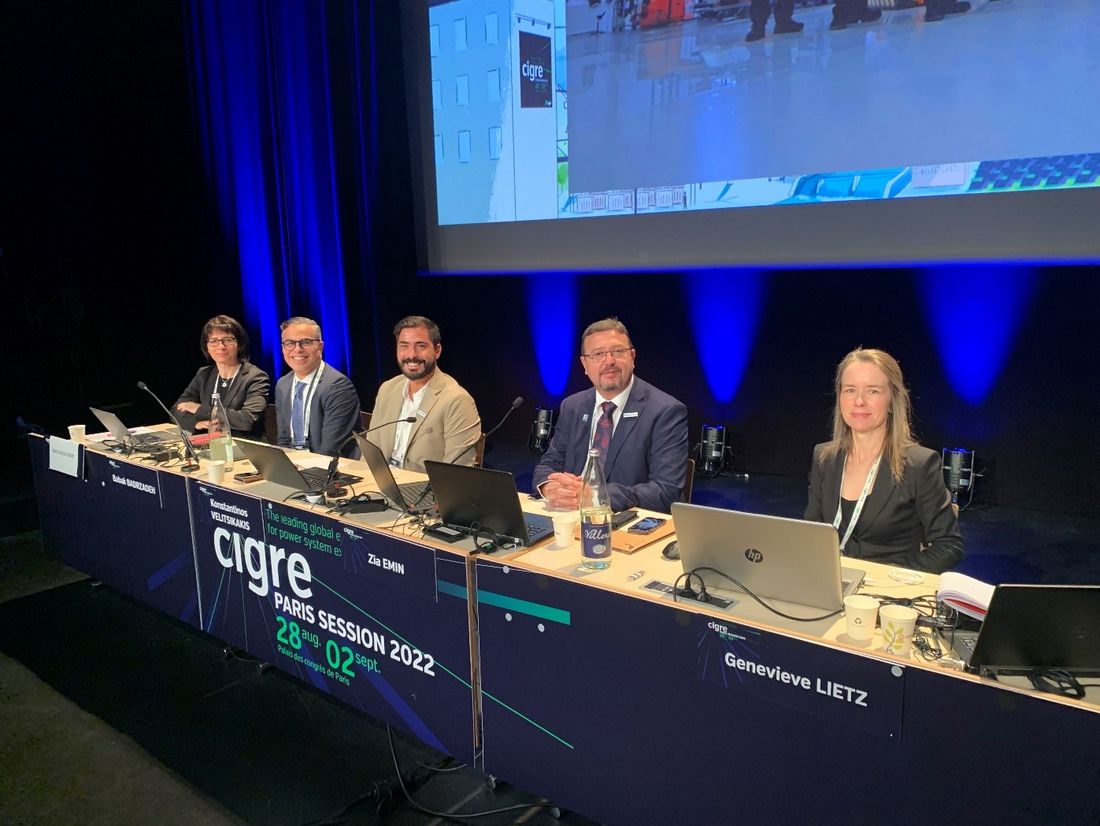
SC C4 2022 Group Discussion Meeting
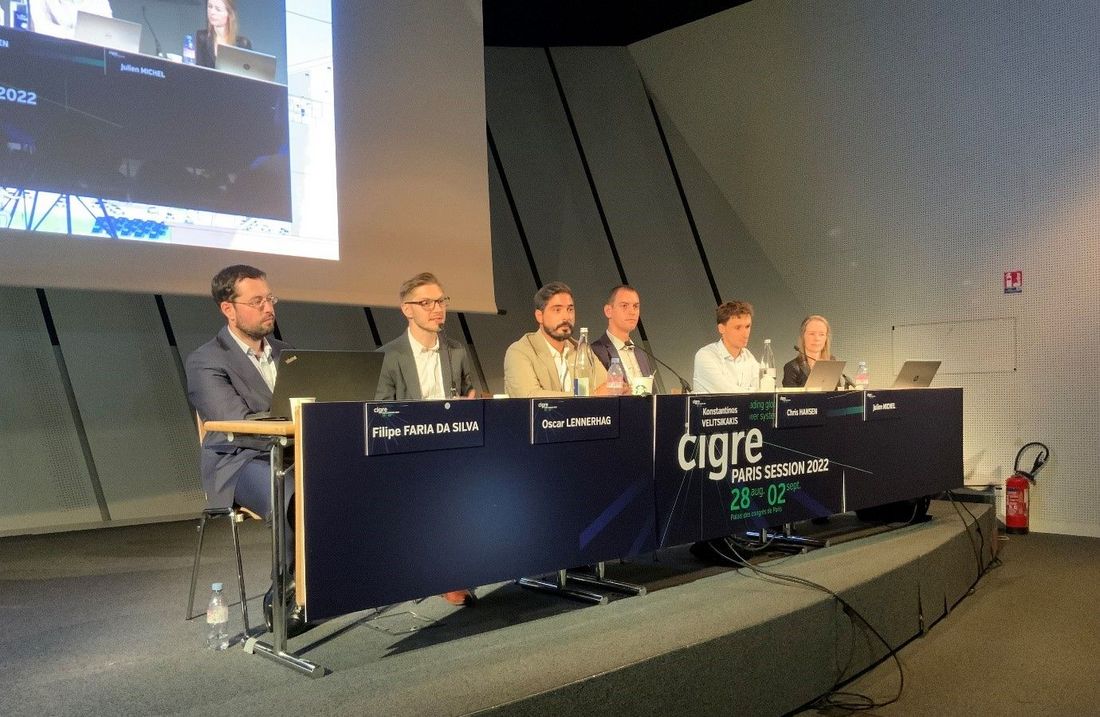
SC C4 2022 Tutorial Team
The tutorial entitled “Evaluation of Temporary Overvoltages in Power Systems due to Low Order Harmonic Resonances” was organised by WG C4.46 led by Dr Filipe Faria da Silva (DK) and supported by WG members Oscar Lennerhag, (SE) Kostas Velitsikakis (NL), Chris Liberty Skovgaard (DK), Julien Mitchel (FR) and the SC secretary Dr Genevieve Lietz (AU).
The Workshop on “Oscillatory instabilities and interactions in inverter based resource (IBR) dominated power systems” was organised by JWG C4/B4.52 led by Dr Chandana Karawita) and WG C4.49 led by Dr Łukasz Kocewiak and both were supported by working group members (C4/B4.52 – Udaya Annakage, Olli-Pekka Janhunen, Robert Dimitrovski, Anuradna Dissanayaka, C4.49 - Christoph Buchhagen, Mats Larson, Ramon Blasco-Gimenez, Salvatore D’Arco Tusitha Abeyasekera).
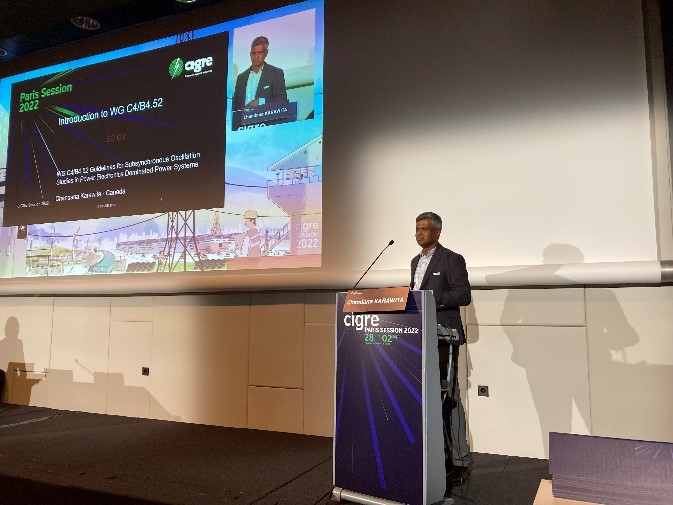
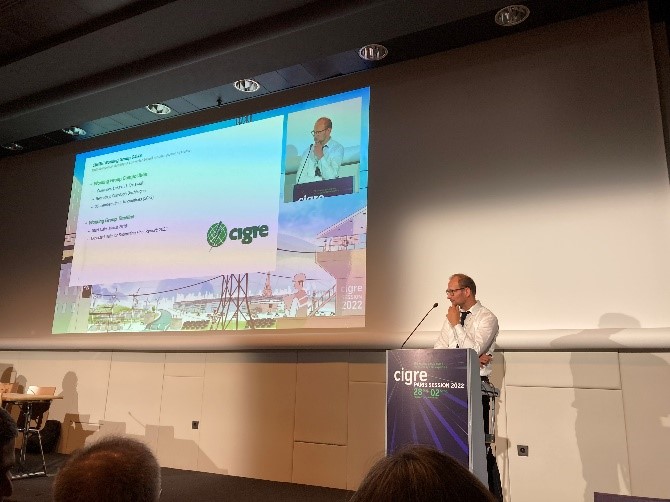
SC C4 2022 Workshop Leaders Chandana Karawita and Łukasz Kocewiak
In terms of upcoming events supported by SC C4, the next major event will be the Cairns Symposium in Australia in September 2023.
Awards
The following individuals associated with SC C4 work in the past or currently (some members work across SCs) were recognised with various CIGRE awards:
- Marta Val Escudero (IE): Technical Council Award
- Maria Teresa Correia de Barros (PT): Distinguished Member Award
- Kostas Velitsikakis (NL): NGN Significant Contribution Award
- Genevieve Lietz (AU): Women in Energy (WiE) Award;
- Zia Emin (UK): Honorary Member Award
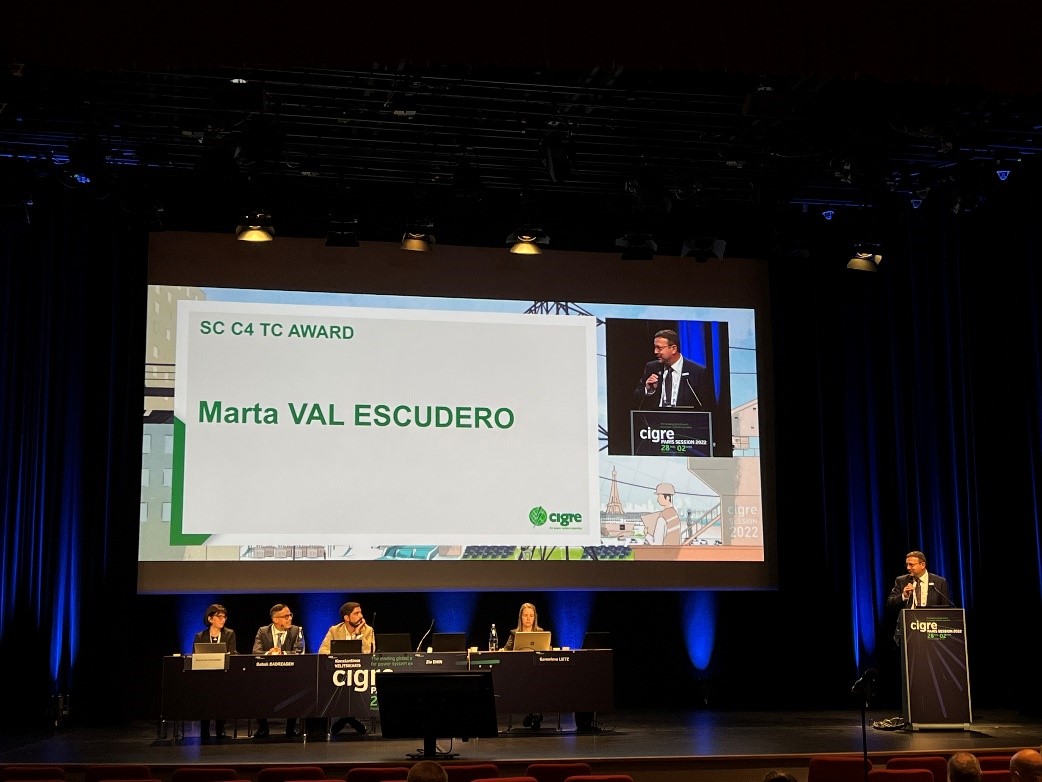
SC C4 2022 TC Award presented to Marta Val Escudero (IE) during the GDM
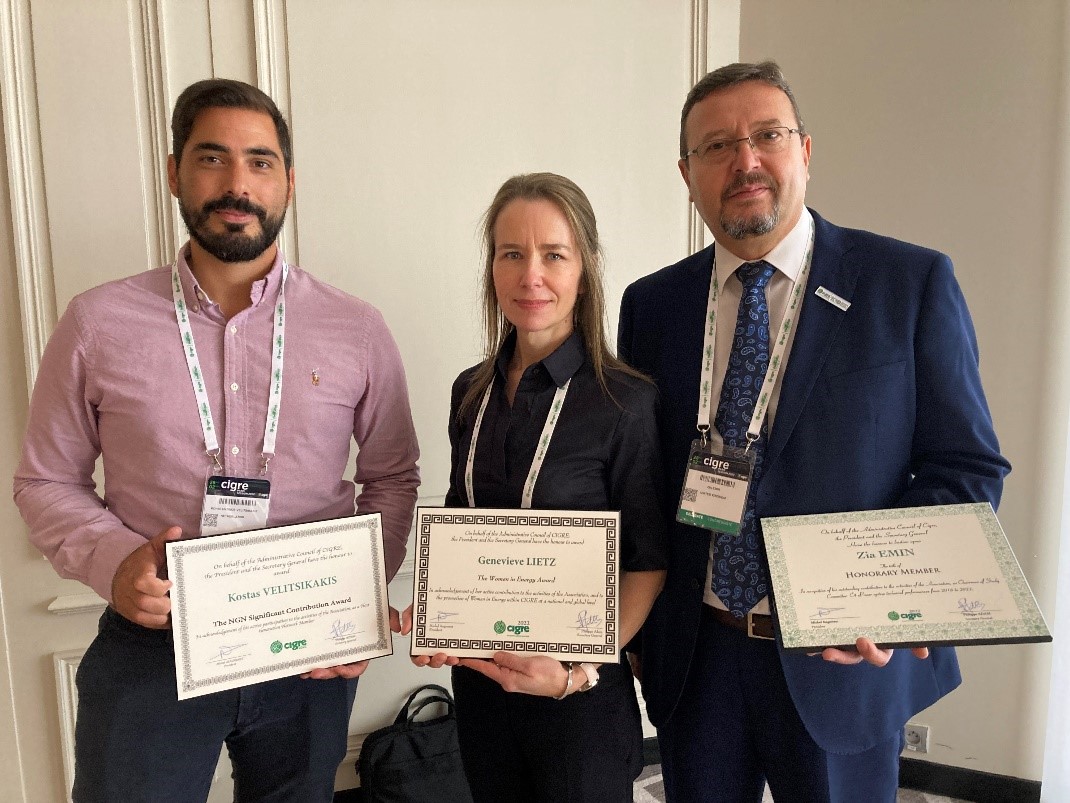
Kostas Velitsikakis (NL), Genevieve Lietz (AU) and Zia Emin (UK) with their awards
